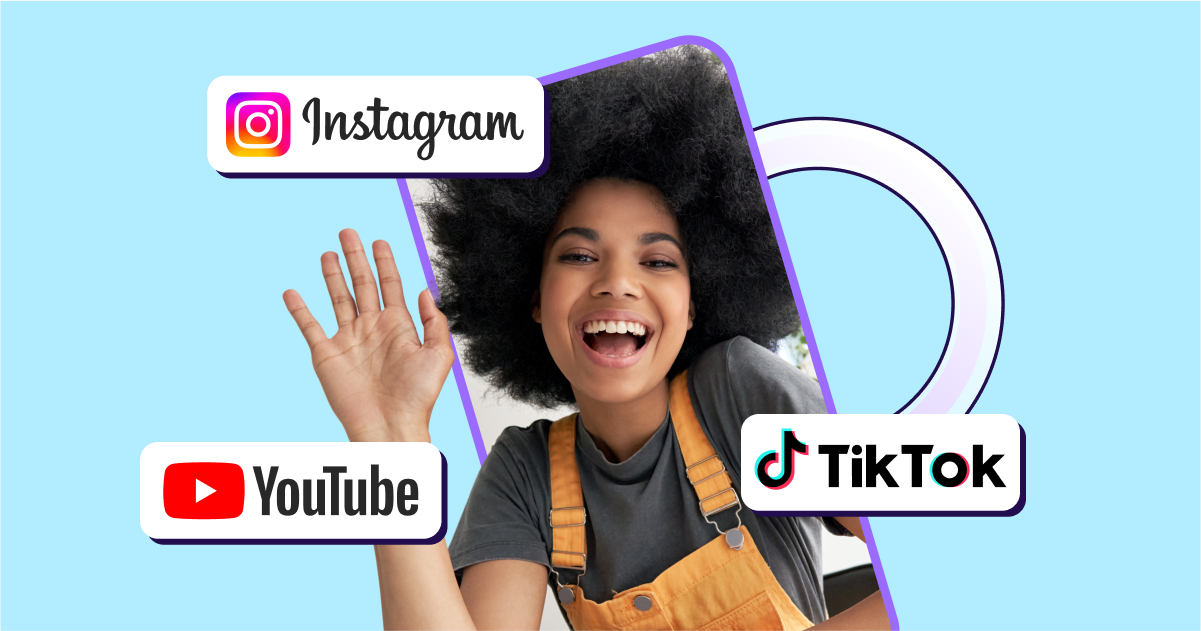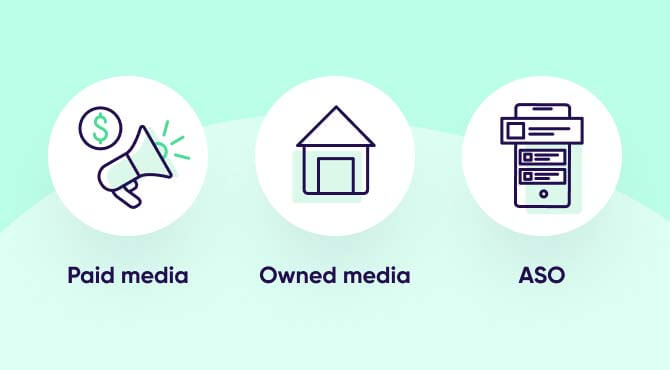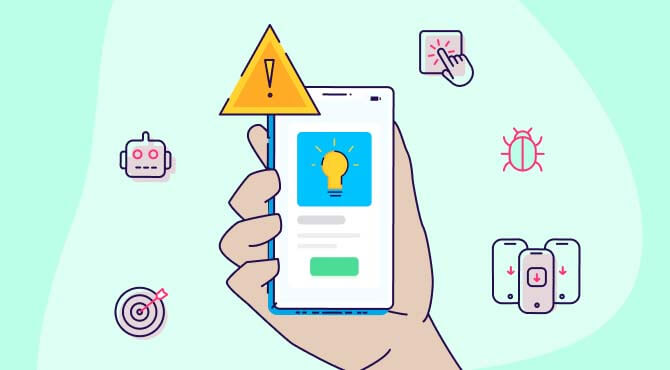
User acquisition (UA)
User acquisition is the method of driving new users to a mobile app, service, or platform through marketing activity.
What is user acquisition?
User acquisition, or UA for short, is the process of attracting new users to a website, service, platform, or app through marketing activity. While other industries might talk about customer acquisition, the app world prefers the term user — as not everyone accessing your app will be a paying customer.
But even if your app is free to download (as most are, these days), user acquisition is still key to growth. In short, the more users install and use your app, the more opportunities you have to make money through advertising or in-app purchases.
In this article, we’ll dig deeper into the importance of UA for mobile apps, look at how you can acquire users through paid and owned media, and show you the tools you need to measure and optimize your efforts.
Why is user acquisition important?
With over 7 million apps available across the iOS and Android stores, you can’t rely on users stumbling across your app and deciding to give it a try.
In such a competitive marketplace, you have to be able to hone in on your ideal audience and prove how downloading your app will benefit them.
Download numbers matter for a couple of reasons:
- Scale is critical to monetizing your app, whether your strategy is based on in-app advertising, in-app purchases, or a hybrid model.
- Downloads are factored into app store algorithms — so the more you get, the higher you’ll rate, and the more visibility you’ll have.
But a good UA strategy looks beyond installs. Nearly half of Android apps are uninstalled within 30 days of install, as users lose interest or find they didn’t deliver as expected. Gaming apps are even more vulnerable to the trash button. Getting your UA right prevents this, by ensuring you attract the right users in the first place. UA techniques can also transfer to re-marketing or re-engagement campaigns, boosting retention.
In short, you need to be all over your UA activities to achieve growth and a sustainable future for your app.
Common types of user acquisition
You can acquire users through various means, including paid, owned, and organic activity. Let’s take a closer look at these different methods.

Paid media marketing
Paid media, as the name suggests, refers to channels and ad networks where you pay to display your brand to a relevant audience. Examples include banner ads on sites frequented by your audience, ads or targeted posts on social media channels, paid search ads, and partnering with influencers to promote your app to an aligned audience.
These techniques can be used to raise awareness of your brand or drive specific activities, such as downloads or purchases. In UA terms, the goal is to get new users to install your app. Because you’re paying the channel or network to get your message out there, you’ll want to be sure your investment pays off by attracting high-quality users.
Owned media marketing
In contrast to paid media marketing, owned media refers to the channels you own and control yourself. These include emails, SMS, QR codes, your own social media pages, and rewarded user invite communications. Once you’ve invested in the creative, the assets are yours to use and there are no additional charges for placement.
Hold on, you say — some of these channels are for my existing users, so how is that “acquisition”? Well, you could be looking to convert web users to your app, upsell them to a premium subscription, or encourage existing users to refer a friend. Alternatively, you might want to attract dormant users back to your app with a remarketing campaign.
App store optimization (organic acquisition)
Also known as ASO, this technique is the equivalent of SEO for app stores – and it’s crucial to user acquisition.
ASO focuses on optimizing your app store page headline, description, keywords, and other components to boost store rankings and make your app more discoverable and appealing. You could have the world’s most exciting marketing campaign, but if people land on your install page and aren’t inspired to convert, you’ve wasted your time and money.
9 key metrics for UA measurement
UA managers keep a variety of numbers at their fingertips to demonstrate the success of their marketing efforts (or identify room for improvement). Here’s a brief guide to some of the key metrics to track — as always, each one will only take you so far on its own, so remember to compare and contrast them for the full picture.
- Conversion rate
Are your ads working? To find out, check your conversion rate: the percentage of people exposed to your ad who go on to download the app.
CVR = (number of conversions / number of interactions) x 100
- Churn rate
Acquiring users is one thing — keeping them is another. In app marketing, your churn rate is the percentage of users who uninstall within a particular time frame. If it’s high, your campaign isn’t delivering bang for your buck: maybe you’re attracting the wrong users, or your app doesn’t live up to the hype.
- Cost per install (CPI)
When your goal is getting people to install your app, CPI is the metric that shows how well you’re doing. Compare it with ARPU or LTV (see below) to discover how profitable your installs are.
CPI = total campaign spend / number of installs
- Cost per action (CPA)
While similar to CPI, CPA can be used to measure the cost of other actions too, like making a referral or upgrading a subscription.
CPA = total campaign spend / number of desired actions taken
- Cost per mille (CPM)
Cost per mille is used in the programmatic advertising ecosystem to calculate the cost of 1,000 ad impressions — that is, showing your ad to 1,000 people. This is important when scale and reach are the name of the game.
CPM = (total campaign spend / number of impressions) x 1,000
- Customer acquisition cost (CAC)
It’s often said that in marketing, you have to spend money to make money. But how do you know when you’re spending too much?
Your customer (or user) acquisition cost compares everything you spend to attract new users — not just a single campaign spend — against the actual number of acquisitions. Compare this with your LTV to understand if your users repay your investment.
CAC = total sales & marketing cost / number of customers
- Lifetime value (LTV)
LTV is an estimate of the total revenue a customer will bring in over the whole time they spend with you (that is, while they continue to use your app). If it’s lower than your CAC, you’re in trouble: your customers are actually costing you money.
LTV = average purchase size x number of purchases x retention period
Or:
LTV = total revenue generated since install date or during period X / total number of users who installed on that date or during period X
- Average revenue per user (ARPU)
ARPU is similar to LTV, in that it looks at the amount of money an average user generates. But rather than lifetime usage, it focuses on users within a specific time period (this could be calendar-driven, like a month, or event-related, such as 14 days post-install). It can show you whether the users you attract are actually profitable.
ARPU = total revenue in period X / number of users in period X
- Return on ad spend (ROAS)
Every marketer’s favorite, ROAS determines how much revenue your advertising has generated. This can help you identify the most effective channels and creatives.
By looking at ROAS alongside CAC, you’ll see not just the cost of acquiring users, but how much revenue those new users bring in.
ROAS = (total revenue from ad campaign / total campaign spend) x 100
How do I optimize for high user acquisition?
As with all marketing activity, winning at user acquisition means keeping on top of your numbers and taking action to continually optimize your approach.

Here are some tips to make your UA work harder:
- Approach the right users. Knowing your audience, what motivates them, and where they hang out, is the first step to serving up relevant, engaging messaging that converts. It also stops you wasting your marketing budget on people unlikely to use your app.
- Build your content strategy. Content marketing is an effective, great-value way to demonstrate your app’s value and connect with potential users. Try creating blogs, articles, and videos, leveraging your own social media to share them far and wide.
- Perfect your creatives. A/B testing lets you compare different versions of your ads to identify the most appealing copy and designs.
- Nail your app store listing. The app store is the final step in the user’s journey to downloading your app, so give it everything. Make sure your copy sparkles and your visuals show your app in its best light – you can even add preview videos.
- Offer a taster. You know the phrase “show, don’t tell”? Well, video demos and free trial periods can make all the difference in convincing potential users of your app’s value.
- Know your attribution. Mobile measurement and attribution tools can help you pinpoint the sources of your highest-quality users, so you know where to allocate future budget.
UA common challenges
Now you’ve got lots of UA ideas, you’ll be keen to get started. But before you dive in, there are a few challenges to be aware of:
- Ad fatigue: advertising is a key component of most UA campaigns, but mobile users are becoming blind to ads or even blocking them. The key is to make sure your creative is top quality and you’re reaching the right audience at the right time.
- Attribution issues: when running campaigns across multiple channels, you want to know which are the most effective. But in the age of privacy, it can be challenging to pinpoint individual user behavior. Attribution fraud can also mess with your data and eat into budgets. Working with a measurement partner can help you stay on top of things.

- Cost and scale: scaling up your UA efforts can be expensive if you’re relying on paid media – so invest wisely, and don’t neglect your owned and organic activity.
User acquisition with AppsFlyer
Scaling and measuring your UA efforts across multiple channels can be challenging, but help is at hand. Trusted by thousands of apps and big-name brands, AppsFlyer’s deep partner integration and powerful marketing measurement solutions provide all the insights you need to fully optimize your campaigns.
Our universal SDK plugs into over 10,000 partners in just a few clicks, so you don’t have to create new integrations for every campaign or media source. Once it’s set up, visit your customizable overview dashboard to drill down into all aspects of campaign performance. You’ll get a crystal-clear view of data across channels, so you can compare results and make meaningful changes.
Key takeaways
Here’s a reminder of the key points about user acquisition:
- User acquisition (UA) is the process of attracting new users to your website, app, or service through marketing. For mobile apps, the focus is on increasing installs, which help you monetize and grow.
- You can use paid advertising or your owned channels for UA, and don’t forget to optimize your app store listing to drive conversions.
- When measuring the success of your UA campaigns, it’s smart to compare and contrast a variety of metrics to see how your achievements stack up against your spend.
- Use the insights you gather to optimize your UA campaigns, for example by approaching the right users, perfecting your creatives, and sharing engaging content or tasters. You should also optimize your app store listing and track your attribution.
- Some challenges of UA include ad fatigue among users, attribution issues due to privacy rules and fraud, and the cost of scaling up your efforts.
- Working with a measurement partner like AppsFlyer can help you scale and optimize your campaigns by providing accurate, actionable data across channels.



